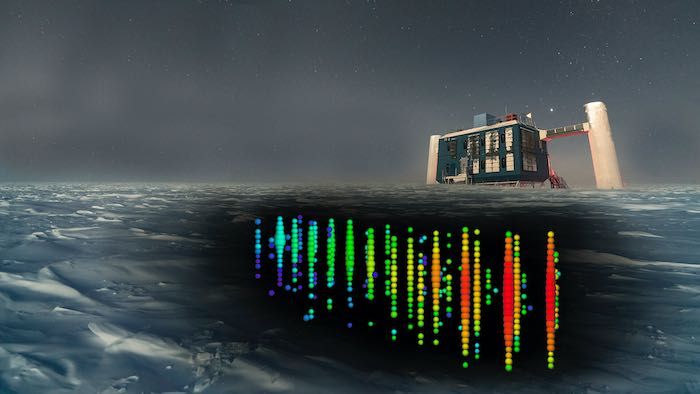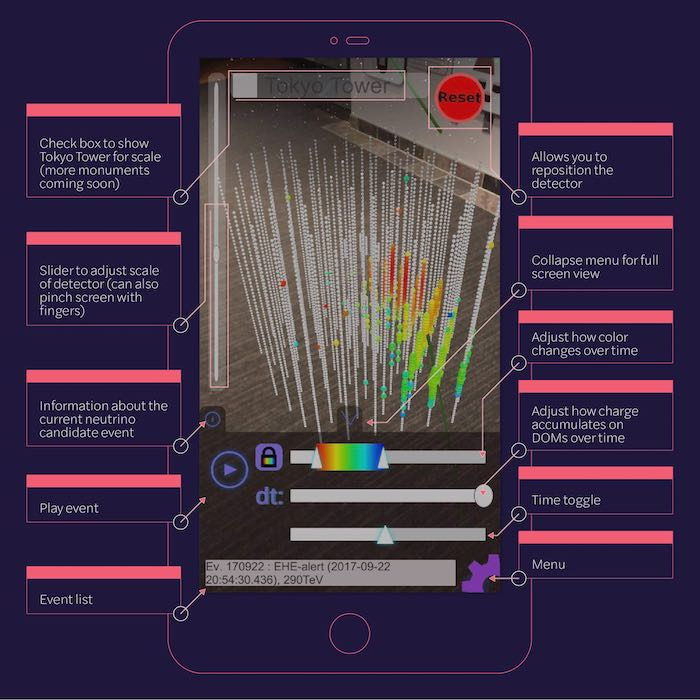When we can't go to Antarctica, we bring Antarctic to us!
In order to keep Antarctica COVID-free, the PolarTREC teachers have postponed our journeys until 2021-2022. (And so have most of our research teams!) But that doesn't mean we are far from polar research!
In fact, the IceCube team launched an app called IceCubeAR - affectionately known as "IceBear" - to bring the science of IceCube to your own homes!
What is IceCube?
The IceCube NeutrinoAn elementary particle with zero charge and zero mass. An electrically neutral particle that is often emitted in the process of radioactive decay of nuclei. Neutrinos are difficult to detect, and their existence was postulated twenty years before the first one was actually discovered in the laboratory. Millions of neutrinos produced by nuclear reactions in the sun pass through your body every second without disturbing any atoms. ObservatoryA location used for observing terrestrial and/or celestial events. is a research station at the South Pole with thousands of sensors on strings that are frozen into the ice, creating a 1km x 1km x 1km cube (hence the name!). These sensors detect tiny particles called neutrinos. Trillions of low-energy neutrinos hit earth (and you!) every second, but IceCube is looking for the rarer high-energy ones.

When a neutrino hits the ice, it sends off a string of reactions that are detectable by the sensors as the particle moves through the cube. Now, the free "IceBear" app allows you to see the activity of the sensors virtually, in the comfort of your own home!
How does IceBear work?
Anytime a neutrino is detected, you can get a notification on your phone. Then, open up the app, and IceCube comes to you!
The AR display puts the sensors in front of you. Allow camera access, and press play to see the sensors light up before your eyes. You can zoom in, walk around the sensors, and investigate the neutrino event up-close like never before. Even scientists IN Antarctica can't get this close!

I have been having so much fun this December virtually visiting Antarctica from the warmth of Los Angeles. Thank you technology! It's so cool to be even closer to the research and the science than I would have been physically! (Don't worry - I'm still crazy, out-of-my-mind excited to go to Antarctica and be there in real-life.) And now, I'll be able to visualize what's happening under the ice!

Daily Challenge
Download the app and see it for yourself! Where are you going to take IceBear??


Comments